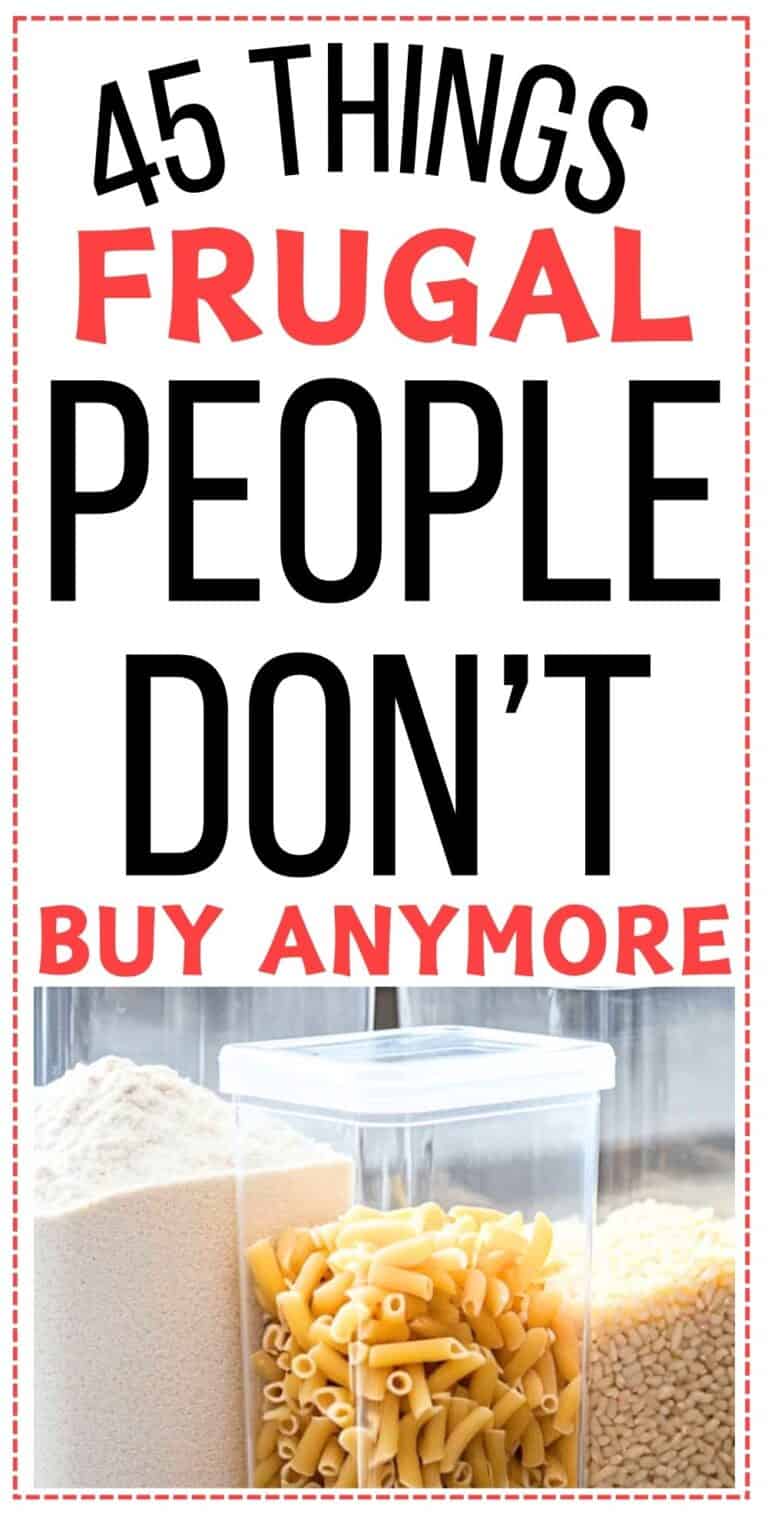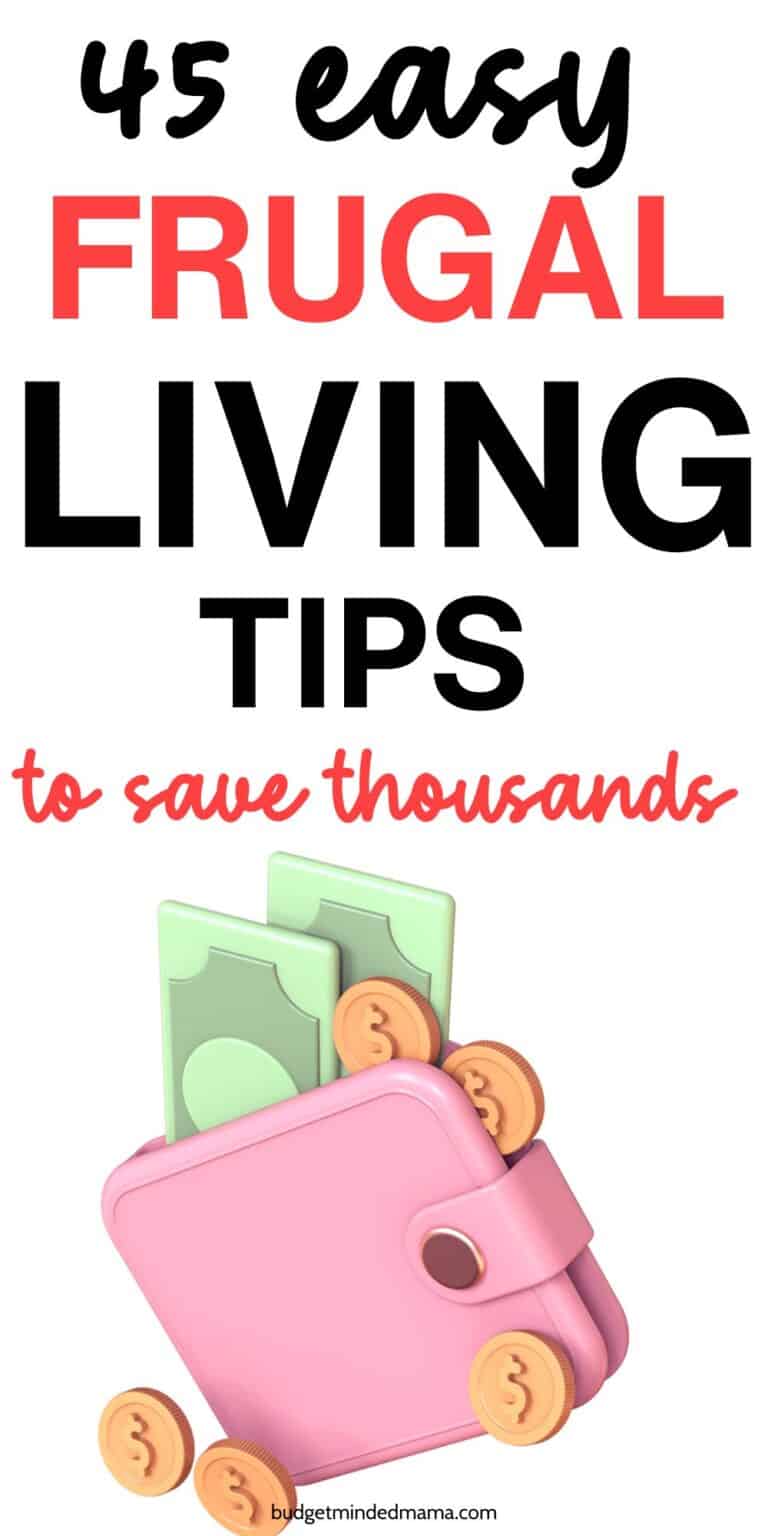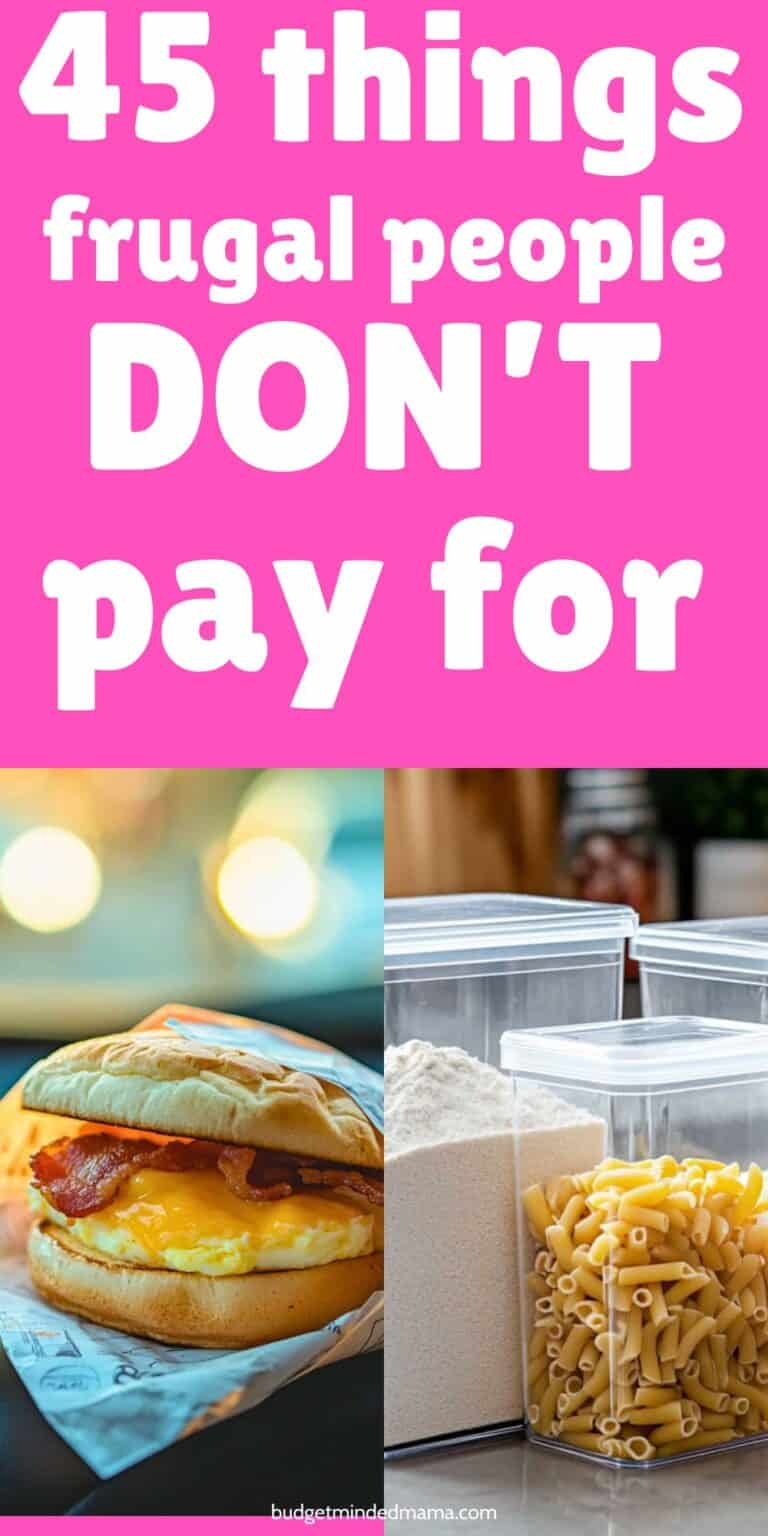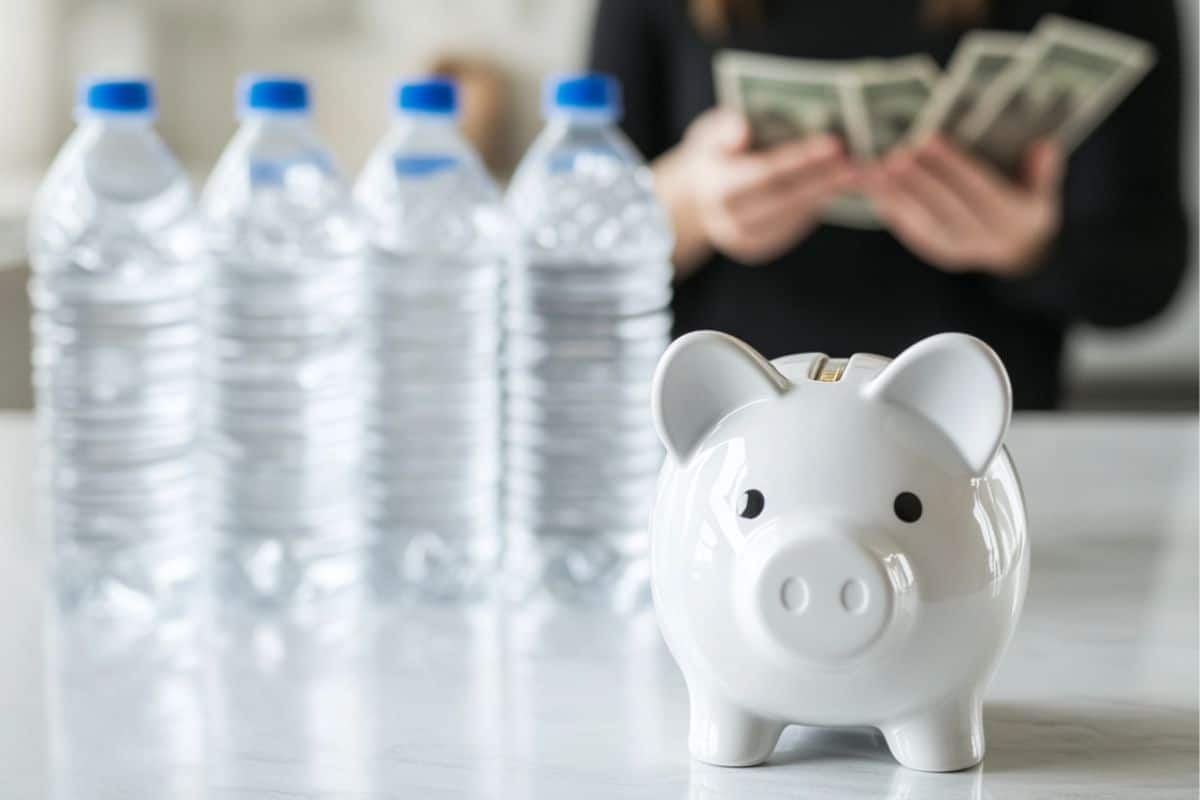I’ve always been fascinated by how some people manage to save a ton of money without feeling like they’re missing out.
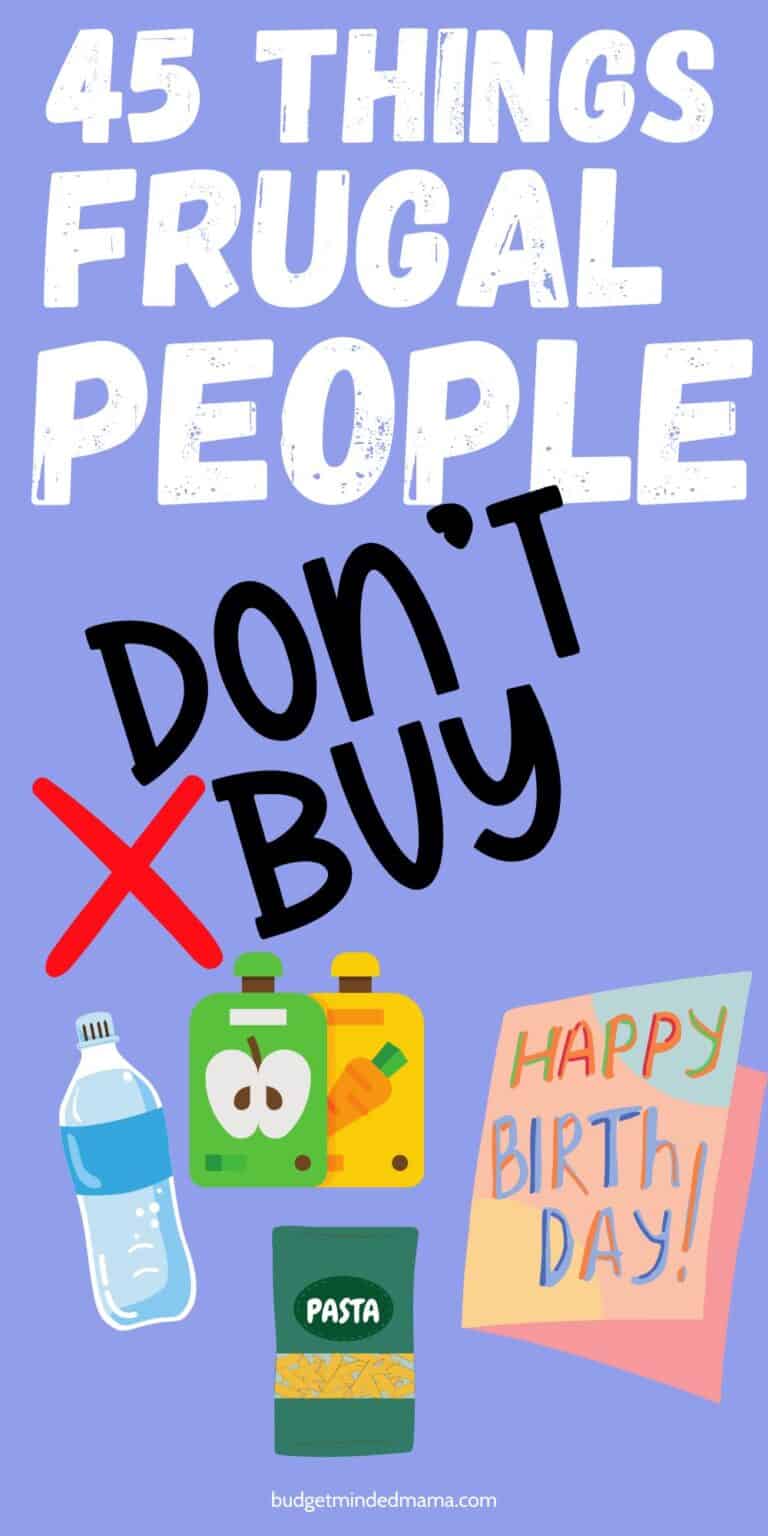
And you know what?
It usually comes down to what they don’t spend money on.
Frugal folks have a way of looking at everyday purchases and asking, Do I really need this?—and more often than not, the answer is no.
They skip the unnecessary, the overpriced, and the just-plain-wasteful, which adds up to some serious savings.
I’m not talking about extreme penny-pinching here—just smart, intentional choices that keep more money in their pockets.
If you’ve ever wondered how to cut back without feeling deprived, you’re in the right place.
Let’s talk about the things frugal people just don’t buy.
Frugal Living Tips to Save Money
Frugal living doesn’t mean cutting everything—it’s about spending smarter and making your money stretch further.
Little changes, like swapping out disposables, buying in bulk, or choosing quality over convenience, add up fast!
1. Bottled Water
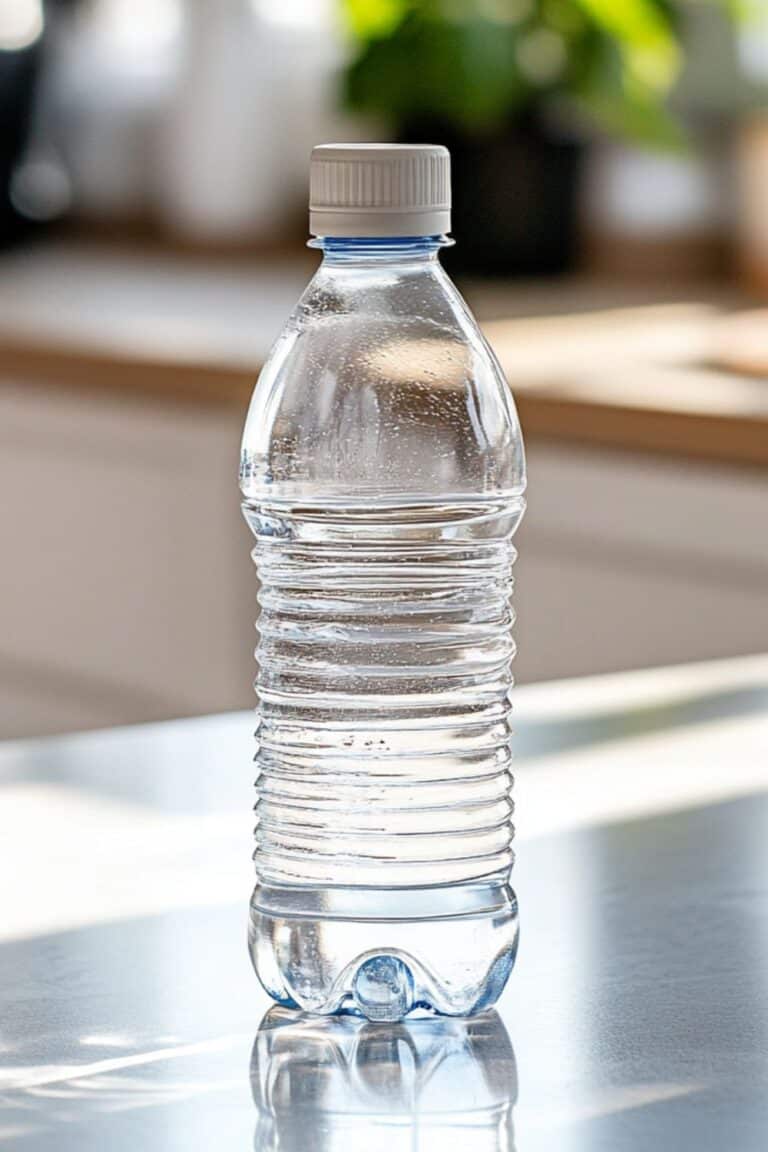
Buying bottled water is like throwing money away, especially when tap water is just as good (and often better regulated).
Plus, all that plastic adds up fast—not just in cost but in waste.
A good reusable water bottle pays for itself in no time and keeps drinks cold longer.
If the taste of tap water bothers you, a simple filter pitcher does the trick for way less.
2. Paper Towels
They disappear faster than you can say “clean up on aisle five,” and you’re constantly restocking.
Instead of tossing money in the trash (literally), switch to reusable cloths or microfiber towels.
They clean better, last forever, and can handle everything from spills to dusting.
Toss them in the wash, and boom—no more wasted money on single-use rolls!
3. Disposable Cleaning Wipes
Sure, they’re convenient, but they’re also pricey and full of chemicals you don’t need.
A DIY spray with vinegar and water (or a gentle all-purpose cleaner) does the same job for pennies.
Pair it with washable rags or old t-shirts, and you’re set for life.
You’ll clean just as fast—minus the waste and constant spending.
4. Single-Use Coffee Pods
They seem small, but those little pods drain your wallet fast—not to mention the landfill.
A reusable coffee filter or refillable pod lets you enjoy your favorite coffee without the guilt or the cost.
Bonus: buying coffee in bulk saves even more. Your morning cup stays just as easy, but way cheaper.
5. Brand-Name Pantry Staples
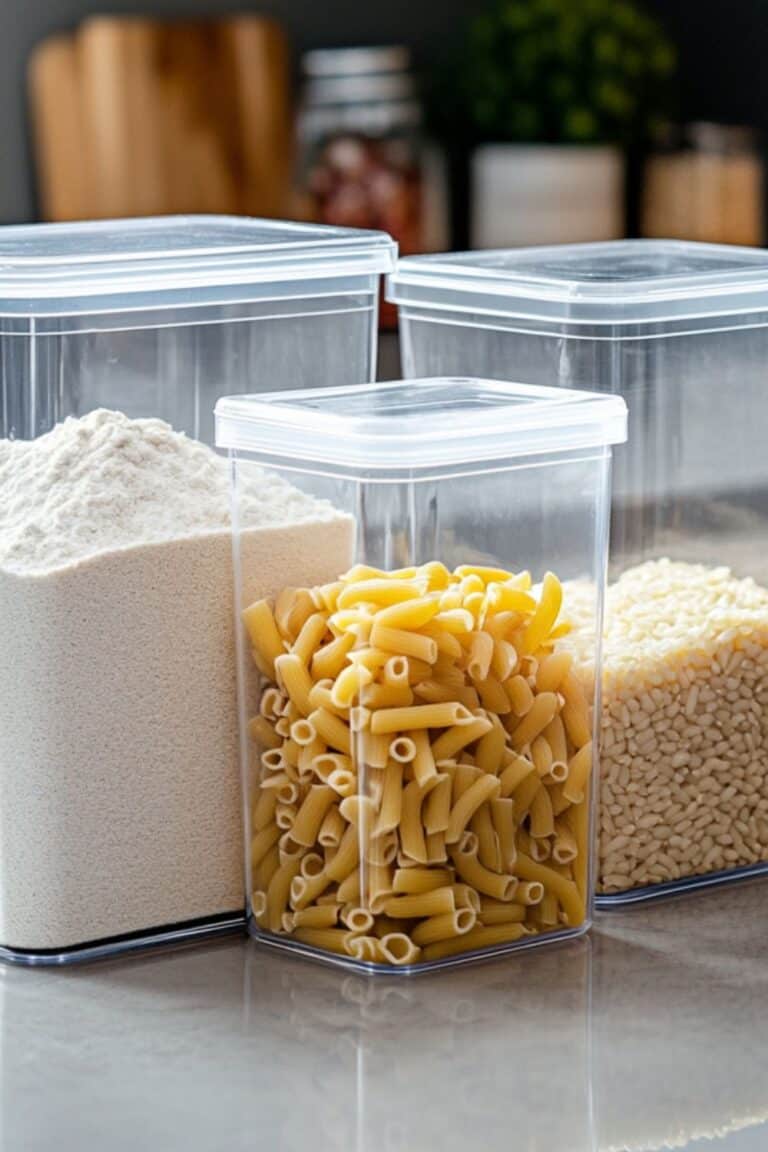
Most store brands have the exact same ingredients—sometimes they even come from the same factory!
You’re paying extra for fancy packaging and advertising.
Swapping to store-brand rice, pasta, flour, and spices is an instant, effortless way to save.
And if you’re worried about taste, start small—you might not even notice the difference.
6. Individually Wrapped Snacks
Pre-packaged snack bags cost way more than buying in bulk and portioning them out yourself.
A big box of crackers or trail mix lasts longer and stretches your dollars further.
Grab some reusable snack bags or small containers, and you’re all set for school lunches or on-the-go munching.
Same snacks, way less money!
7. Juice Boxes And Pouches
They’re convenient, sure, but they’re also expensive and loaded with sugar.
A big bottle of juice (or better yet, water) saves cash and cuts down on waste.
Pour it into a reusable cup with a lid, and your kids won’t know the difference.
Bonus: fewer sticky juice spills in the car!
8. Takeout Coffee
That “just one latte” habit adds up fast, and before you know it, you’re spending hundreds a year on coffee.
Making it at home is just as delicious and way cheaper.
A good travel mug keeps it hot, and flavored syrups or frothed milk can give you that coffee-shop feel.
Your wallet (and your morning routine) will thank you.
9. Pre-Made Lunches For Kids
Lunchables and other pre-packed meals might be convenient, but you’re paying a premium for tiny portions.
A homemade version with crackers, cheese, and deli meat costs less and is just as easy to throw together.
Bento boxes or divided containers make packing a breeze.
Plus, you control the ingredients, so it’s often healthier too.
10. Store-Bought Baby Food
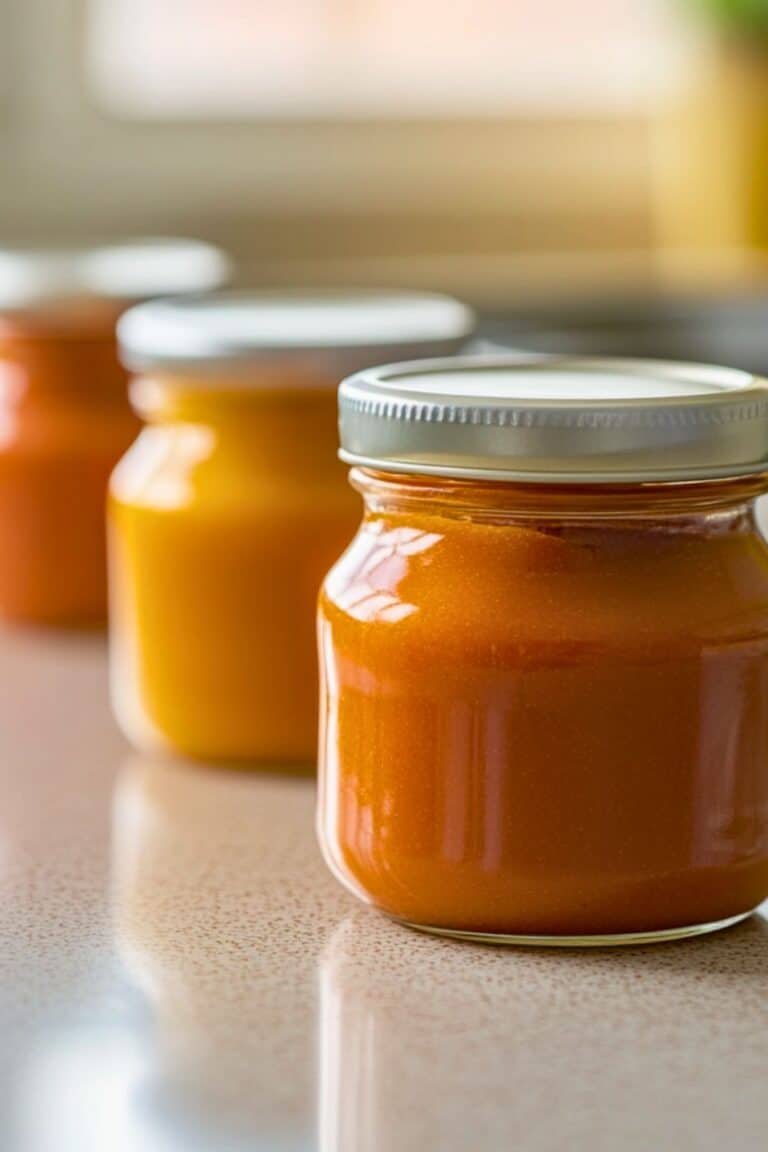
Tiny jars and pouches are ridiculously expensive for something so simple.
Making baby food at home takes minutes—just blend up some fruits, veggies, or oats with a little water.
You can freeze portions in ice cube trays for easy grab-and-go meals.
It’s fresher, cheaper, and you know exactly what’s in it.
11. Expensive Laundry Detergent
Fancy name-brand detergents make big promises, but most store brands clean just as well for half the price.
Better yet, detergent sheets or DIY detergent can cut costs even more.
They work in any machine and reduce plastic waste too.
Clean clothes, extra cash in your pocket—win-win.
12. Fabric Softener
It doesn’t actually do much besides coat your clothes in chemicals and drain your wallet.
White vinegar in the rinse cycle softens fabric naturally and costs next to nothing. If you miss the scent, a few drops of essential oil do the trick.
Your laundry comes out fresh, fluffy, and way cheaper.
13. Dryer Sheets
They’re overpriced and full of chemicals, plus they just get tossed after one use.
Wool dryer balls last for years, reduce drying time, and naturally keep clothes soft.
If static is a problem, aluminum foil balls or a splash of vinegar in the wash help too.
No waste, no weird residues, just fresh laundry.
14. Fancy Hand Soaps
Those beautifully packaged soaps are fun, but you’re mostly paying for branding and fragrance.
A bulk bottle of plain hand soap works just as well, and you can refill your fancy dispensers for pennies.
If you like scents, add a few drops of essential oil.
Clean hands don’t have to cost a fortune.
15. Disposable Plates And Cutlery
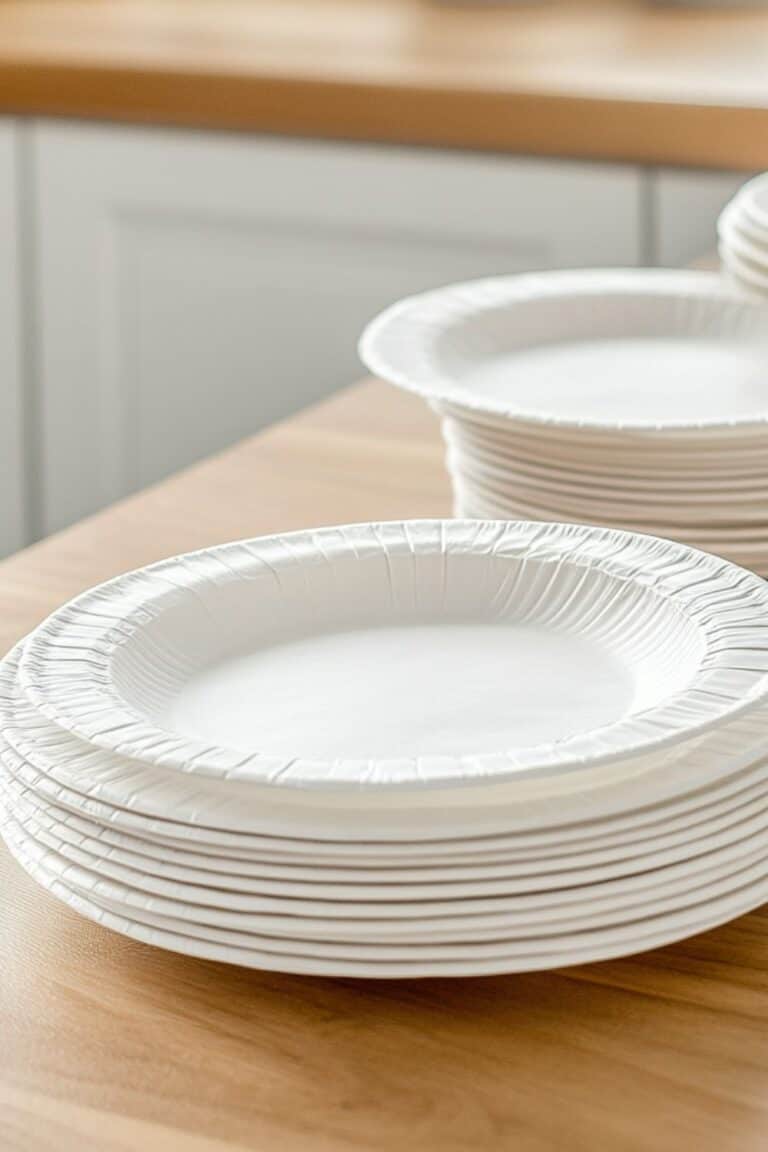
They’re convenient, but they also mean constantly buying (and throwing away) more.
Reusable plates and utensils save money and cut down on waste.
For busy nights, a quick rinse or dishwasher run is easier than running to the store for more disposables.
Plus, real plates just feel nicer.
16. Paper Napkins
Same goes with paper napkins!
Buying packs of napkins week after week is like tossing money in the trash.
A simple set of cloth napkins lasts for years and makes meals feel a little fancier. T
hey’re easy to wash and way better for the environment.
17. Expensive Cleaning Sprays
Most store-bought cleaners are just water and a few basic ingredients marked up a lot.
Vinegar, baking soda, and a little dish soap handle almost any mess.
A reusable spray bottle and a quick DIY mix save cash without sacrificing cleanliness.
No more paying for fancy labels and extra chemicals!
18. Subscription Streaming Services They Don’t Use Regularly
It’s easy to sign up for streaming services and forget about them, but those monthly charges add up fast.
If you’re not using it regularly, it’s just money down the drain.
Rotating services or sticking to free options like library rentals keeps entertainment cheap.
Cutting a few subscriptions could save you hundreds a year.
19. Gym Memberships
Unless you actually go several times a week, gym memberships are an expensive guilt trip.
Home workouts with free YouTube videos, resistance bands, or bodyweight exercises work just as well.
A few basic pieces of equipment cost less than a few months at the gym.
You’ll save money and skip the commute.
20. Extra School Supplies That Don’t Get Used

It’s easy to get caught up in back-to-school shopping and overbuy.
But let’s be real—half those supplies sit unused all year.
Checking what you already have and only buying what’s actually needed keeps costs down.
Teachers love donations, but your wallet doesn’t love unnecessary extras.
21. Unnecessary Tech Gadgets For Kids
New gadgets always seem fun, but they often end up collecting dust after a few uses.
Kids are just as happy with simple toys, library books, or free educational apps.
If a gadget isn’t truly useful, it’s not worth the price.
Save your money for experiences or things they’ll actually use.
22. Expensive Phone Cases And Accessories
Trendy phone cases and accessories are fun, but they don’t need to cost a fortune.
A solid, affordable case does the job just as well as a designer one.
Instead of upgrading accessories constantly, stick with quality basics that last.
Your phone stays protected, and your bank account stays happy.
23. Cheap Toys That Break Easily
They might seem like a deal, but cheap plastic toys rarely last more than a few days before breaking.
Instead of wasting money on things that end up in the trash, go for quality over quantity.
Simple, well-made toys (or secondhand finds) last longer and get played with more.
Fewer broken pieces, less clutter, and better value in the long run.
24. Overpriced School Fundraisers
Let’s be honest—those fundraisers sell overpriced wrapping paper, cookie dough, and knickknacks no one really needs.
Frugal moms skip the guilt spending and donate directly to the school instead.
This way, 100% of the money goes to the kids instead of getting lost in markup.
The school wins, the budget stays intact, and there’s no clutter from random fundraiser buys.
25. Expensive Greeting Cards
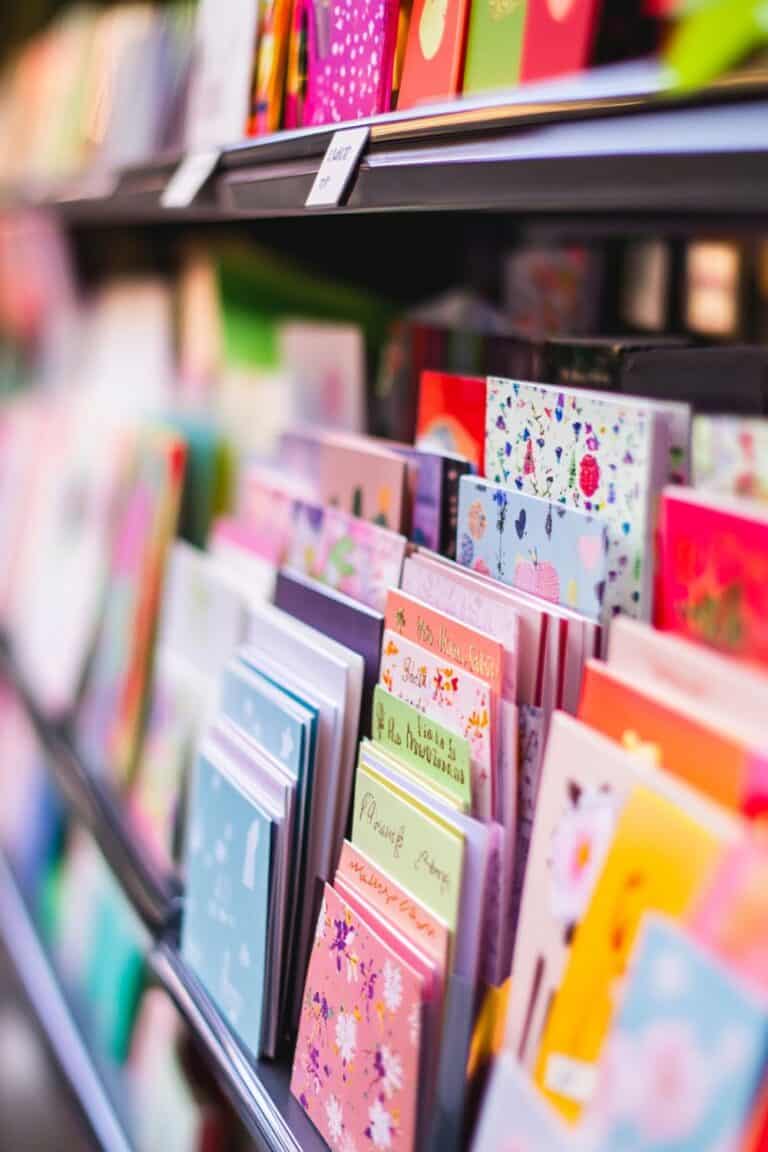
Spending $6 on a card that will be read once and tossed?
No thanks.
A heartfelt note on a simple card (or even a DIY version) means more than something mass-produced.
If you love cards, buying them in bulk or using digital ones saves a ton over time.
It’s the thought that counts, not the price tag.
26. Full-Price Holiday Decorations
Holiday decorations are fun, but paying full price every season is a budget killer.
The trick? Stock up after the holiday when everything is 50-90% off.
Thrift stores and DIY options also make it easy to decorate for less.
27. Brand-New Books
Buying new books adds up fast, especially when kids fly through them in a week.
Frugal moms take advantage of libraries, secondhand bookshops, and digital borrowing.
If a book is really loved, then it’s worth buying—otherwise, borrowing is free.
28. Magazines
Magazines are full of ads, cost a fortune over time, and usually get tossed after one read.
Instead, borrowing from the library or reading digital versions saves money and space.
If there’s a must-have subscription, waiting for deep discounts makes a big difference.
No clutter, no wasted money, just the content you actually want.
29. Movie Theater Snacks
By the time you’ve grabbed popcorn, drinks, and candy, you’ve spent more than the actual movie tickets.
Eating beforehand saves a ridiculous amount – or having snacks afterwards.
Some theaters even allow refillable popcorn buckets, which stretch your dollar further.
30. Drive-Thru Breakfasts
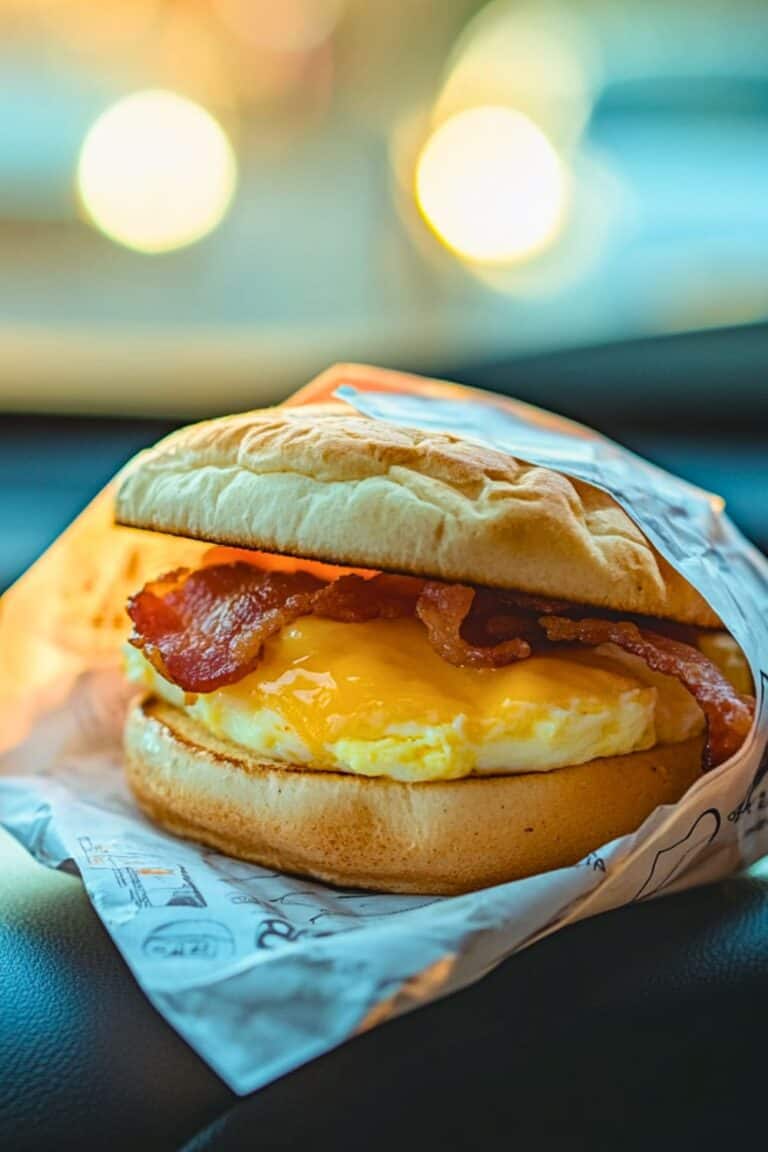
Grabbing breakfast on the go is easy, but those small purchases add up fast.
A few minutes prepping at home—oatmeal, eggs, or a quick smoothie—saves money and keeps things healthier.
If mornings are crazy, making extra and freezing portions helps a ton.
No more overpriced coffee shop muffins that barely fill you up.
31. Expensive Vitamins And Supplements They Don’t Really Need
The supplement industry loves convincing people they need all kinds of extra pills.
But unless there’s a real deficiency, most vitamins just make for pricey pee.
Eating a balanced diet is usually enough, and basic multivitamins work just as well as fancy ones.
32. Plastic Sandwich Bags
Single-use bags might seem cheap, but constantly rebuying them adds up fast.
Reusable snack bags or small containers do the same job and last for years.
They’re easy to clean, keep food just as fresh, and cut down on waste.
A one-time purchase means no more running out of bags mid-week.
33. Disposable Baking Pans
They’re convenient, but after a few uses, the cost surpasses a good reusable pan.
A solid baking dish or muffin tin lasts forever and is way more budget-friendly.
If cleanup is the issue, parchment paper or silicone mats do the trick.
34. Expensive Skincare Products
Fancy skincare ads love promising miracle results, but most of the time, you’re just paying for marketing.
Simple ingredients like aloe, vitamin C, and sunscreen do the heavy lifting.
Drugstore brands often have the same active ingredients as high-end products.
Healthy skin doesn’t have to come with a luxury price tag.
35. Brand-Name Diapers
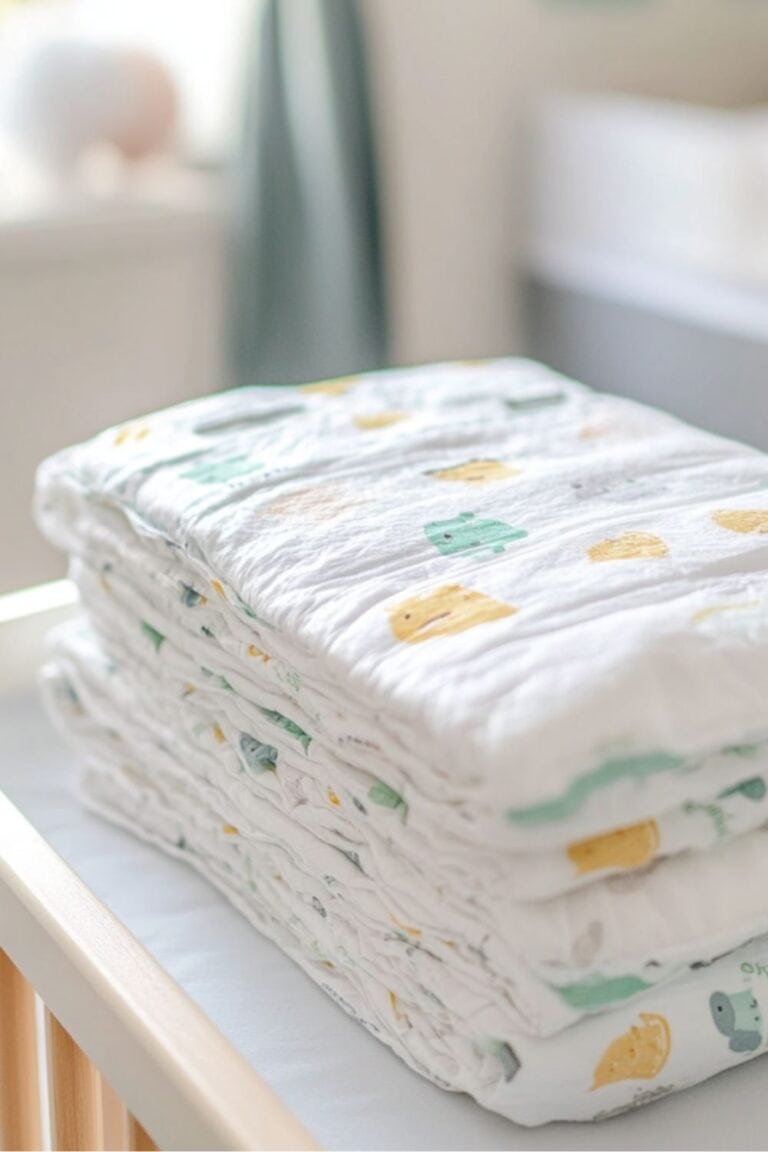
Diapers are a must, but the brand name doesn’t always mean better.
Store-brand or bulk-buy options work just as well at a fraction of the price.
Keeping an eye out for sales or trying different brands saves a lot over time.
36. Expensive Baby Wipes
Just like diapers, name-brand wipes are often way overpriced.
Frugal moms buy in bulk, use reusable cloth wipes, or make their own with water and a little baby soap.
It’s gentler on the wallet and the baby’s skin.
37. Name-Brand Toothpaste And Deodorant
Unless there’s a specific need, store-brand toothpaste and deodorant work just as well.
The active ingredients are usually identical, just with fancier packaging.
Switching to budget-friendly versions saves money every single month.
Clean teeth and fresh pits for less? Yes, please.
38. Expensive Pet Treats
Pet treats can cost more than human snacks, and for what?
Buying in bulk or making simple DIY treats saves tons.
Dogs and cats don’t care about branding—they just want something tasty.
39. Cheap Plastic Food Storage Containers That Don’t Last
Those flimsy containers seem like a deal until they crack, warp, or stain after a few uses. Investing in glass or durable plastic sets saves money long-term.
They last years and don’t get that weird smell cheap ones do.
Fewer replacements, better quality, and less waste.
40. Scented Trash Bags
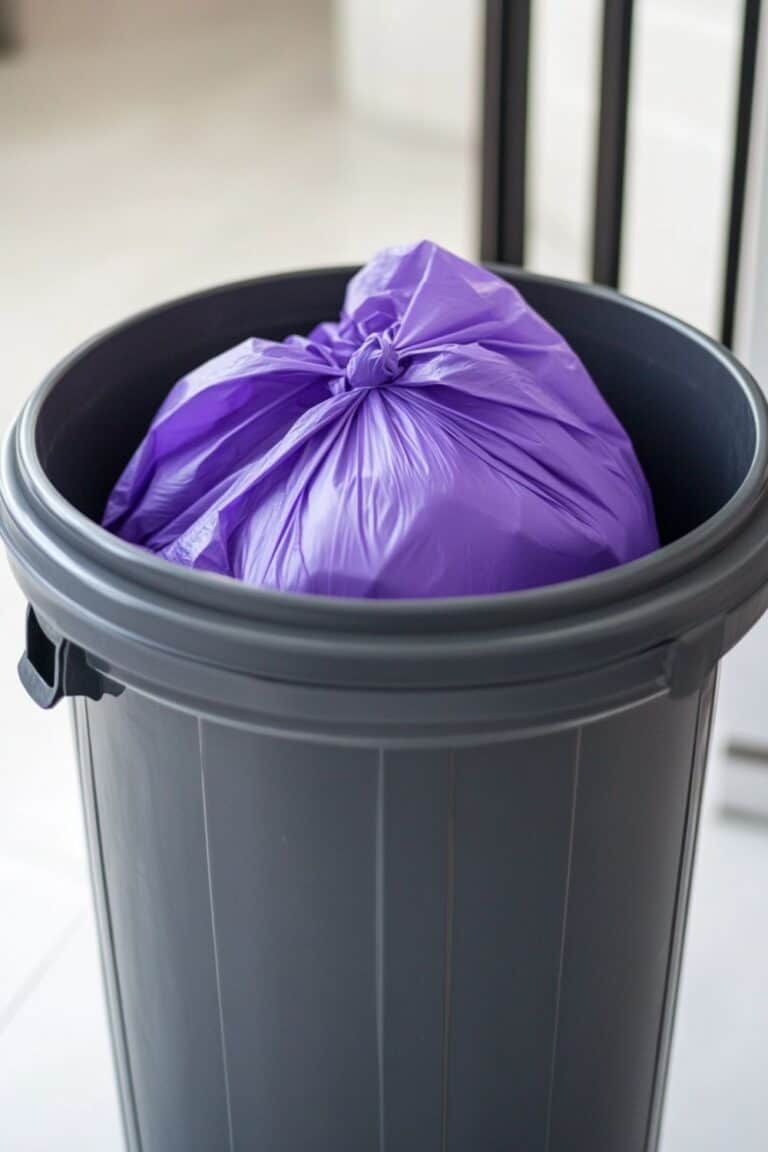
Trash bags are already a necessary expense, but paying extra for scented ones?
Not worth it.
Regular, no-frills bags do the exact same job for less, and if odor is an issue, baking soda or a DIY deodorizer works wonders.
You’re literally throwing them away—no need to spend extra.
Frugal Living Is About Smart Choices
Frugal living isn’t about depriving yourself—it’s about making smarter choices that keep more money in your pocket without sacrificing quality.
By skipping overpriced, wasteful, or unnecessary purchases, you free up cash for the things that truly matter.
Small swaps add up fast, and before you know it, you’re saving hundreds (or even thousands) a year.
The best part? You won’t even miss most of these things once they’re out of your routine!
